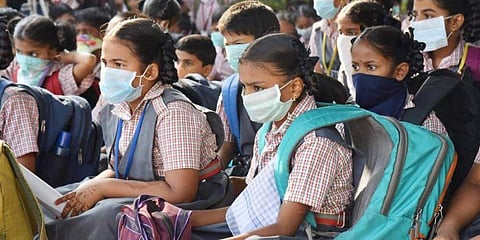

The previous year has been extremely challenging with the shutdown imposed by the pandemic. While this has affected society, it has been especially disruptive for children. More than 320 million children in India were affected by school closures.
While the immediate and obvious conclusion would be that this has severely affected the academic rhythm and performance, Sportz Village's Annual Health Survey (AHS) reveals that this has also affected the ability of children to stay active and healthy. Schools play an instrumental role in maintaining the health and fitness of children. Schools not only provide the daily dose of physical activity to children but also offer safe play spaces. The survey reveals that, due to the extended periods of school closures, the health of children has suffered.
The percentage of children having healthy levels of aerobic capacity and core strength during this period dropped drastically by 33 per cent and 10 per cent respectively. The survey which covered more than 2.5 Lakh children across 250 towns and cities also looked at the state of health of children on the following fitness parameters - Body Mass Index (BMI), Aerobic Capacity, Anaerobic Capacity, Abdominal or Core Strength, Flexibility, Upper Body Strength and Lower Body Strength. And the results are worrying.
While from the total number of children surveyed amongst 2,54,681 children from 364 schools across 250 cities and towns - 1 in 2 children do not have healthy BMI, 1 in 2 children do not have adequate Upper Body Strength, 2 in 3 children do not have the adequate Lower Body Strength, 1 in 6 children do not have the desired Abdominal Strength, 1 in 3 children do not possess the desired Flexibility, 2 in 3 children do not have the desired Aerobic Capacity and 1 in 3 children do not possess the desired Anaerobic Capacity.
While this is concerning, there is a clear way forward to address this issue - and that is to get children active. With the rollout of the vaccines, schools will be gradually opening over the coming months. There is a need to ensure that the playtime that children get in the schools is structured so that they can extract the most value out of it.
Schools that incorporated a structured in-school sports program observed a drastic increase in the health of their children -The percentage of children exhibiting healthy levels of Upper Body Strength increased by 21 per cent, Lower Body Strength by 11 per cent, Aerobic Capacity by 6 per cent and Anaerobic Capacity by 5 per cent. The survey also brought to light the differing health performance of children based on their gender, the region they are from and the schools they attend (public or private).
According to the survey, the percentage of girls with healthier BMI levels (48 per cent of girls have healthy BMI scores) is more when compared to only 44 per cent of boys. The girls also fared better in Flexibility and Upper Body Strength. However, they did not fare well in Aerobic Capacity and Lower Body Strength.
Children from the North are healthier than children from the rest of the country with the best numbers in the parameters of BMI and Aerobic Capacity, and above-average numbers in the parameters of Flexibility, Upper Body Strength, Lower Body Strength and Core Strength. However, they performed extremely poorly in Anaerobic Capacity.
The overall performance of the children from the South is concerning. Although in some parameters they showed average or above-average performance, they performed poorly in Upper Body Strength, Lower Body Strength and Core Strength. Children from the East have performed exceptionally well with the best numbers in Lower Body Strength, Core Strength, Anaerobic Capacity and Flexibility. However, they performed poorly in BMI. Children from the West had an overall average performance with above-average numbers in most health parameters. They, however, had the best numbers in Upper Body Strength.
The survey further reveals, more children in private schools have healthy BMI levels (46 per cent), compared to the children from government schools (42 per cent). Children from private schools also fared better in Upper Body Strength and Core Strength, whereas they did poorly in Flexibility.
Saumil Majmudar, Co-Founder and Group CEO, Sportz Village, says, "Sportz Village's 11th Annual Health Survey (AHS) clearly highlights the low levels of fitness in children across the country. Although this is a cause for concern, we know how to combat the issue. Structured play that is inclusive and age-appropriate, directly impacts several health parameters such as Upper Body Strength, Lower Body Strength, Aerobic and Anaerobic Capacity. School leaders can help address the key challenge through the inclusion of adequate structured sports or physical education periods, both online and offline, in the academic curriculum for the coming academic year. Parents can also help improve their child's fitness by encouraging good screen time that gets children active at home in case there are restrictions around play in the neighbourhood."
